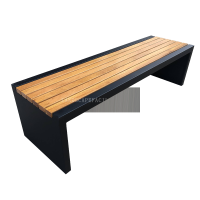Welcome to the website for landscape facilities products and knowledge.
How does the design of the trash can impact its compatibility with waste compaction systems?
The design of a trash can plays a pivotal role in determining its compatibility with waste compaction systems, directly impacting efficiency and sustainability in waste management. Key factors such as material durability, shape, and structural integrity influence how well a bin integrates with compaction mechanisms.
1. Material Durability: Trash cans made from high-density polyethylene (HDPE) or stainless steel withstand the pressure exerted by compactors, preventing cracks or deformations. Lightweight or flimsy materials may fail under stress, leading to frequent replacements.
2. Shape and Size: Rectangular or square bins align better with compaction systems, optimizing space utilization. Oversized or irregularly shaped containers may cause jams or inefficient compaction.
3. Lid and Opening Mechanism: Secure, airtight lids prevent waste spillage during compaction, while wide openings accommodate bulky items without hindering the process.
4. Structural Reinforcement: Reinforced bases and walls distribute compaction force evenly, extending the bin’s lifespan.
5. Mobility Features: Wheels or handles facilitate seamless transport to compaction units, reducing manual labor.
Innovative designs, like sensor-equipped smart bins, further enhance compatibility by automating waste level detection and compaction cycles. Ultimately, thoughtful trash can design ensures smoother integration with waste compaction systems, promoting eco-friendly waste disposal practices.
Related search:

Recommendation
Modern Stainless Steel Begonia Wood Park Chair Outdoor Courtyard Leisure Sun Protection Bench Long Seat